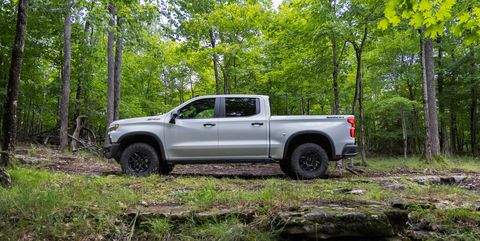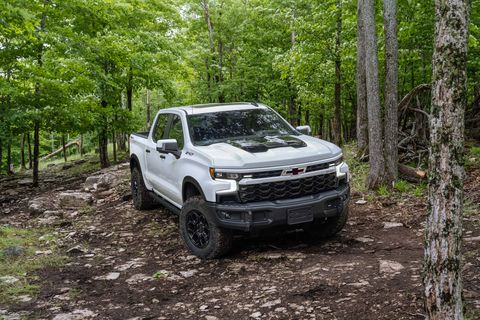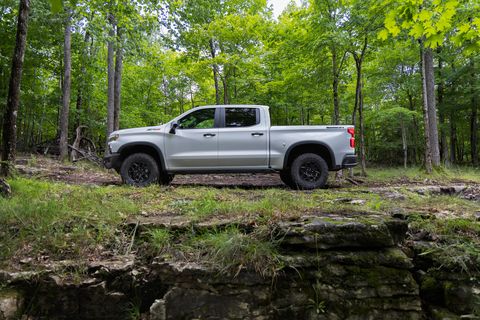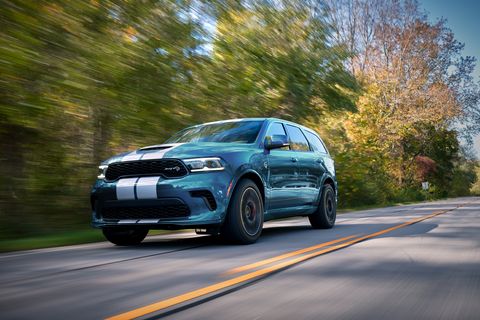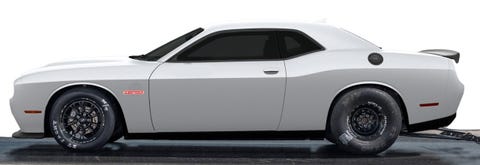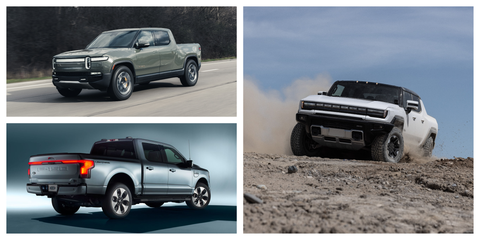2023 Dodge Charger Review, Pricing, and Specs
Overview
Muscle cars are meant to bark through the neighborhood between streetlights, and the Dodge Charger has been off its leash for plenty of years now. More than a decade into its current generation, the seemingly ageless Charger comes standard with a 292-hp V-6 and rear-wheel drive, with an all-wheel drive option should you need it. Consider this version the calm older dog of the lineup. But there’s also bark and bite in the Charger family. Step up to the R/T trim for the 370-hp 5.7-liter V-8 engine. Scat Pack models get even more power, with a 6.4-liter, 485-hp V-8. The tire-killing supercharged Hellcat models get even wilder but are reviewed separately. If the Charger drives like an old cop car, that’s because it is. And while the world shifts to alternative energy, the Charger keeps on chugging along as a sedan version of the coupe-bodied, gasoline-fired Challenger. One day cars like the Charger will be against all the rules, but for now this V-8-powered sedan remains loud and proud.
What’s New for 2023?
For 2023 Dodge has dropped not-so-subtle hints of the current Charger’s end-of-year demise. While this chapter comes to a close, we expect the next-generation Charger to include an electric powertrain with horsepower at the forefront of that effort. The 2023 Charger wears special commemorative “Last Call” plaques under the hood to indicate that this is the final model year of the current generation, and Dodge will offer popular colors from the car’s past, including Plum Crazy, B5 Blue, and Sublime Green. All R/T models gain a new “345” badge on the front fender to pay tribute to the Hemi V-8 engine that resides under the car’s long, vented hood.
Pricing and Which One to Buy
SXT
$35,000 (est)
GT
$37,000 (est)
$43,000 (est)
Scat Pack
$50,000 (est)
Scat Pack Widebody
$55,000 (est)
We think the Charger R/T, with its 370-hp 5.7-liter V-8, has the perfect mix of power and features. Those who want all-wheel drive are limited to the V-6 versions. The bigger 485-hp V-8 that comes with the Scat Pack makes accelerating great again but costs about $5000 more than the R/T. Along with a standard 8.4-inch Uconnect touchscreen with Apple CarPlay and Android Auto, our choice includes a throbbing dual-mode exhaust, a leather-wrapped performance steering wheel, and 20-inch rims. We’d also add the Driver Convenience Group (blind-spot monitor, rear cross-traffic alert, heated exterior mirrors, and upgraded headlights) and the Performance Handling Group (20-inch wheels with all-season performance tires, Brembo brakes, and sport-tuned suspension).
Engine, Transmission, and Performance
The Charger channels its NASCAR roots with big V-8 power and rowdy sounds. However, not every Charger has a mighty Hemi V-8 under the hood—what a pity—but they do all share an excellent eight-speed automatic transmission and standard rear-wheel drive. In contrast, the V-6 is subdued but does add the availability of all-wheel drive. Dodge doesn’t build a Charger with a manual gearbox, but it would be so much cooler if it did. The standard V-6 is no slouch, yet it lacks the giddy-up of front-drivers such as the Nissan Maxima. The more powerful versions excel at the strip, where the 485-hp Charger R/T Scat Pack posted an impressive 3.8-second sprint to 60 mph. The 370-hp Charger has enough ponies to outrun most family sedans. The bright (Green Go) Charger we paraded around town had a quiet and composed ride. Its large 20-inch wheels were relaxed on most surfaces, but obstacles such as railroad crossings and potholes disrupted its composure. The big-bodied sedan was remarkably balanced when cornering, too. Although the V-6 version we tested had nearly identical cornering grip, the Daytona’s hefty horsepower advantage amplified the fun. The electrically assisted power steering contributes to the Charger’s purposeful control, but its feedback is too heavy and slow to be engaging. We’ve tested several Chargers for emergency braking, and the best results came from the high-performance models with upgraded brakes and stickier summer performance tires.
Fuel Economy and Real-World MPG
The Charger is a big, heavy car with a healthy appetite for fuel. Although it has below-average EPA estimates in the city, it has fairly competitive highway ratings. While we haven’t tested the 5.7-liter V-8 on our 75-mph real-world fuel-economy route, which is part of our extensive testing regimen, we have tested the V-6 with all-wheel drive and the larger 485-hp V-8. Surprisingly, both engines were within 1 mpg of each other, with the six earning 26 mpg on the highway and the eight earning 25 mpg. For more information about the Charger’s fuel economy, visit the EPA’s website.
Interior, Comfort, and Cargo
The Charger’s interior is highly functional yet the opposite of luxurious, with more rubberized materials than the set of an adult film. Apart from excellent rear-seat legroom, its passenger space is slightly below average. The cabin’s simplistic design is classic muscle car, but options are plentiful. Although its trunk volume is similar to those of most rivals, the Charger was able to fit an extra carry-on box than its rivals. It held 18 total with the rear seat stowed, beating the Maxima and the fastback-hatchback Kia Stinger by three. Its center console features plenty of spots for small items and a slot alongside the shifter that is perfect for storing your smartphone.
Infotainment and Connectivity
Every Challenger has a version of the excellent Uconnect infotainment system. That means standard Apple CarPlay and Android Auto as part of a 7.0-inch or 8.4-inch touchscreen. Although the system we tested elicited good response times, some optional controls can only be accessed via the touchscreen; a Wi-Fi hotspot also is unavailable.
Safety and Driver-Assistance Features
The big Dodge sedan does offer a host of driver-assistance technology, including adaptive cruise control and automated emergency braking. However, those features cost extra, and base models are excluded from the most advanced options. For more information about the Charger’s crash-test results, visit the National Highway Traffic Safety Administration (NHTSA) and Insurance Institute for Highway Safety (IIHS) websites. Key safety features include:
- Available blind-spot monitoring and rear cross-traffic alert
- Available lane-departure warning and lane-keeping assist
- Available forward-collision warning
Warranty and Maintenance Coverage
Dodge provides an average limited and powertrain warranty set that aligns with the Maxima’s coverage, but the Kia Cadenza has a significantly longer powertrain warranty and the Toyota Avalon offers complimentary maintenance.
- Limited warranty covers three years or 36,000 miles
- Powertrain warranty covers five years or 60,000 miles
- No complimentary scheduled maintenance
Specifications
Specifications:
VEHICLE TYPE: front-engine, all-wheel-drive, 5-passenger, 4-door sedan
PRICE AS TESTED: $41,325 (base price: $34,340)
ENGINE TYPE: DOHC 24-valve V-6, aluminum block and heads, port fuel injection
Displacement: 220 cu in, 3604 cc
Power: 300 hp @ 6350 rpm
Torque: 264 lb-ft @ 4800 rpm
TRANSMISSION: 8-speed automatic with manual shifting mode
CHASSIS:
Suspension (F/R): control arms/multilink
Brakes (F/R): 13.6-in vented disc/12.6-in vented disc
Tires: Michelin Primacy MXM4, 235/55R-19 101H M+S
DIMENSIONS:
Wheelbase: 120.2 in
Length: 198.4 in
Width: 75.0 in Height: 58.2 in
Passenger volume: 102 cu ft
Trunk volume: 17 cu ft
Curb weight: 4281 lb
C/D TEST RESULTS:
Zero to 60 mph: 6.4 sec
Zero to 100 mph: 16.6 sec
Zero to 130 mph: 35.0 sec
Rolling start, 5–60 mph: 6.8 sec
Top gear, 30–50 mph: 4.1 sec
Top gear, 50–70 mph: 5.1 sec
Standing ¼-mile: 14.9 sec @ 95 mph
Top speed (governor limited): 132 mph
Braking, 70–0 mph: 176 ft
Roadholding, 300-ft-dia skidpad: 0.79 g
C/D FUEL ECONOMY:
Observed: 20 mpg
75-mph highway driving: 26 mpg
Highway range: 480 mi
EPA FUEL ECONOMY:
Combined/city/highway: 21/18/27 mpg
